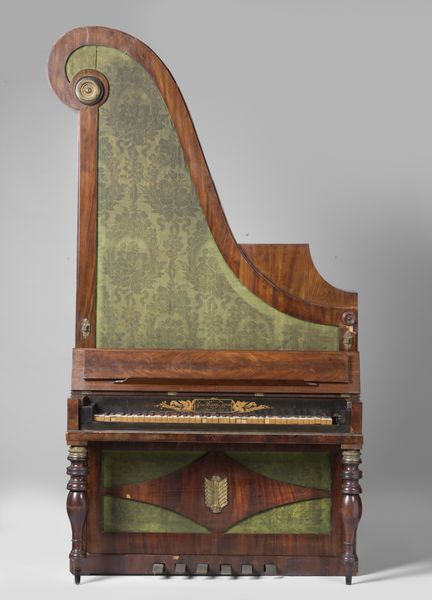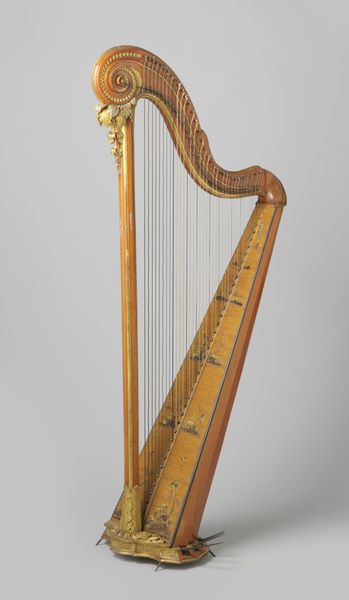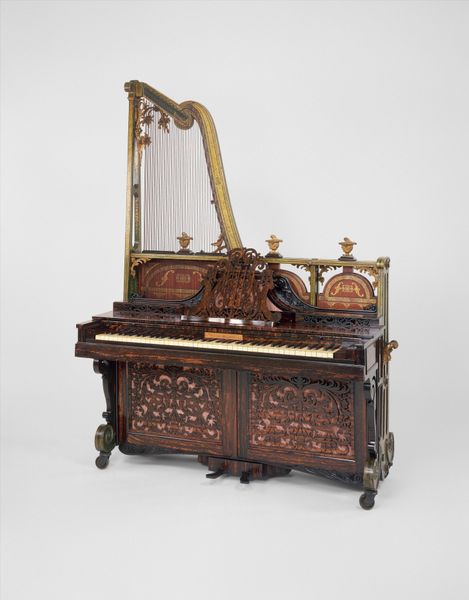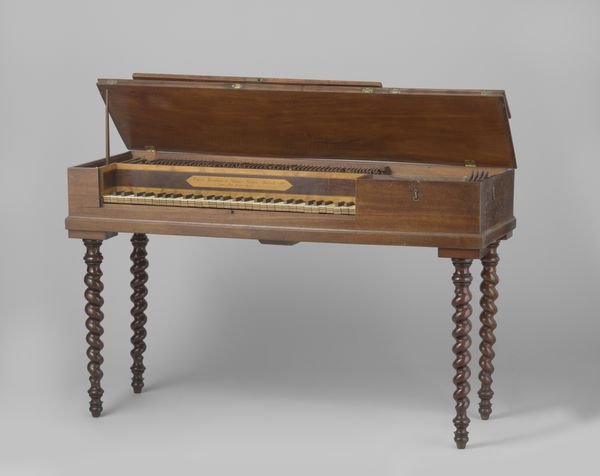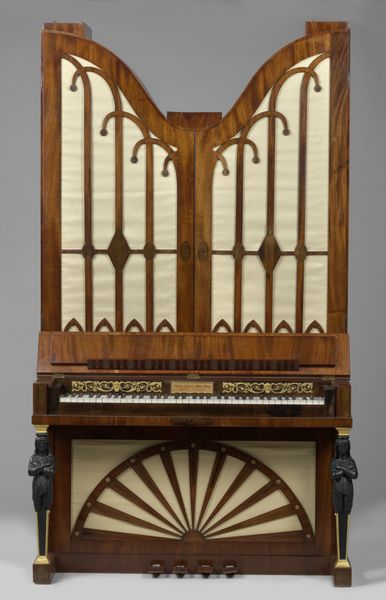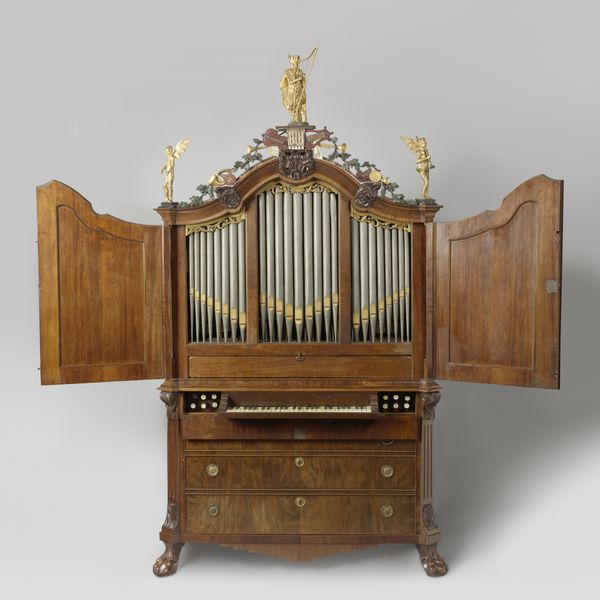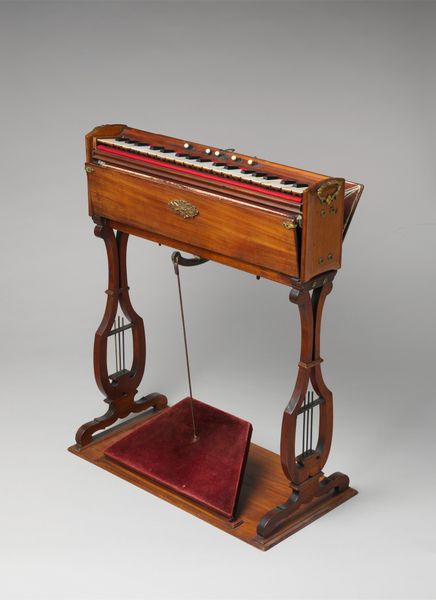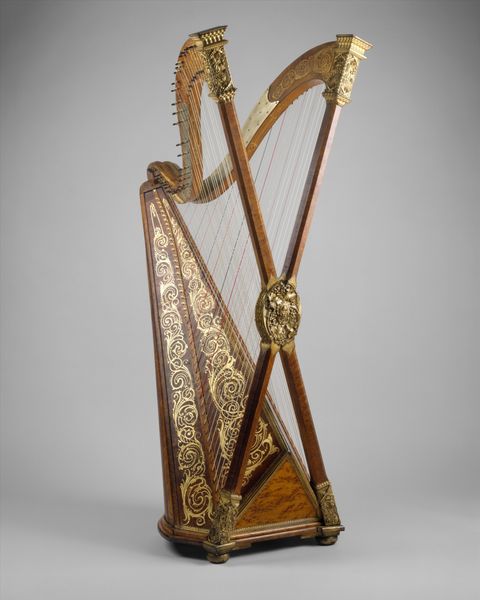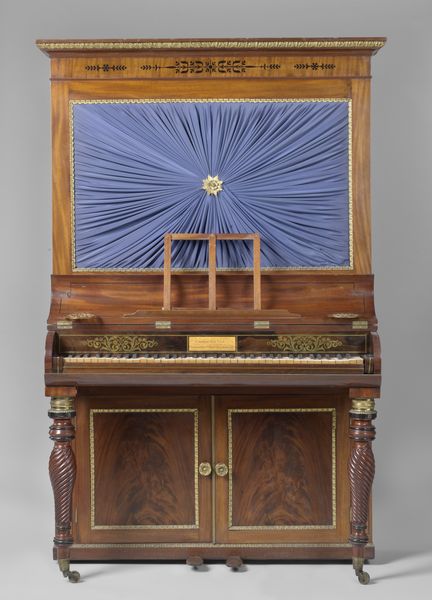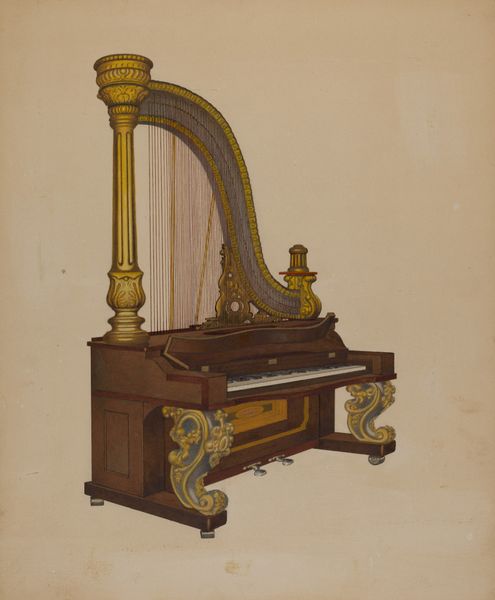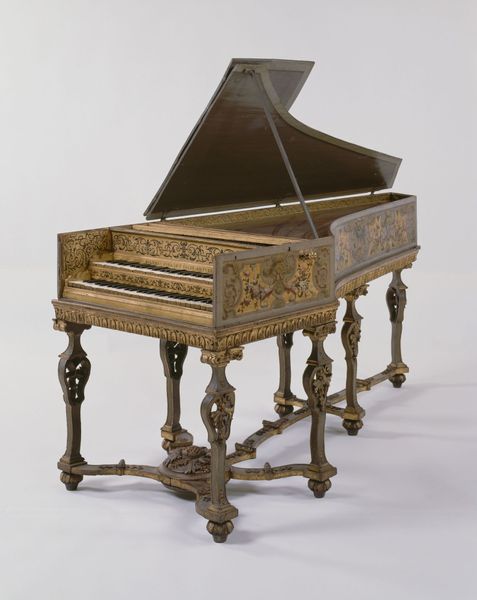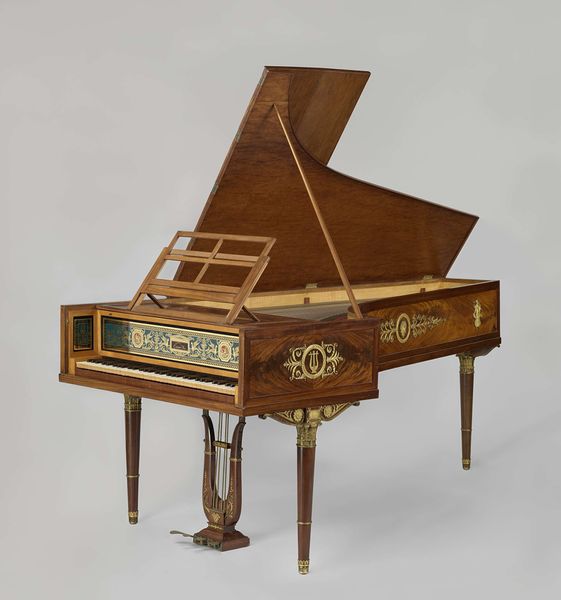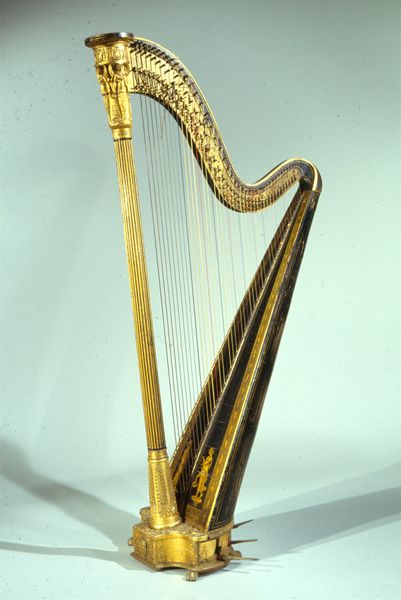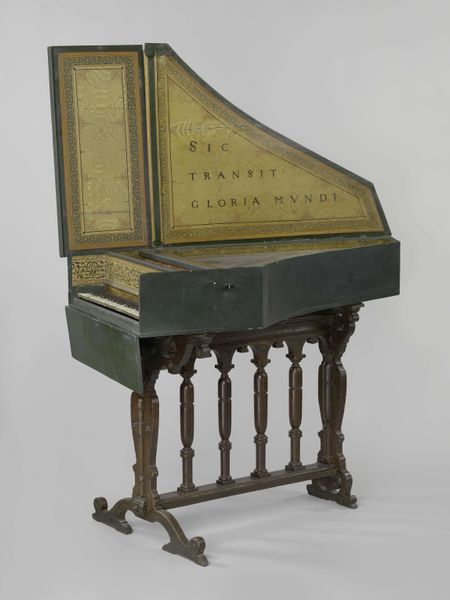
guilding, wood
#
furniture
#
guilding
#
romanticism
#
wood
#
musical-instrument
#
decorative-art
Dimensions: H. 7' 3"; W. 49 in., D. 2 ft. Case L (perpendicular to keyboard): 60.3 cm (23 3/4 in.) Case W (parallel to keyboard): 124 cm (48 13/16 in.) Total H: 222.5 cm (87 5/8 in.)
Copyright: Public Domain
Curator: Here we have Johann Christian Schleip’s "Lyraflügel," crafted sometime between 1825 and 1844. It's currently held in the collection of the Metropolitan Museum of Art. Editor: Wow, what a statement piece! My immediate reaction is… theatrical. It's almost cartoonishly grand, in a way. The gilding really pops against the dark wood. Curator: Indeed. Schleip was clearly drawing on Romantic ideals. Consider how the form echoes classical antiquity, a deliberate referencing of history to ennoble both the instrument and, implicitly, its owner. Editor: That's a fair point, but I can't help but think about who this piano was actually for. Its ornamentation almost feels like a barrier, suggesting it was designed more to be looked at than played, perhaps speaking volumes about status and access to both music and wealth at that time. Curator: Absolutely. Think of the salons it might have occupied. The instrument becomes a locus of social performance, reinforcing class structures. The very design pushes back against utility and embraces extravagance. Editor: And that central lyre motif – its resonance goes beyond mere aesthetics. In ancient Greece, the lyre was linked to Apollo, and, of course, associated with poetic inspiration and harmony, key cultural attributes during this era. This instrument aims at signifying a link to these sources of power. Curator: It’s worth examining the symbolic capital attached to such objects. It was the early days of piano manufacturing as well, and such a creation certainly had value in constructing a vision of the "high arts" that also made room for decorative artistry as exemplified in the guilds. Editor: Right, so this isn't just about the music, it’s about the whole performance of class, taste, and access to cultural lineage. A heavy weight for something intended to make pretty sounds. Curator: The "Lyraflügel," beyond being a musical instrument, becomes a lens through which we examine social hierarchies and cultural values of the time. Editor: Well, it's certainly given me plenty to consider regarding how art objects both reflect and shape social dynamics. Curator: Precisely. Looking deeper, art like this helps us re-examine the relationship between the aesthetic and the political throughout history.
Comments
No comments
Be the first to comment and join the conversation on the ultimate creative platform.
